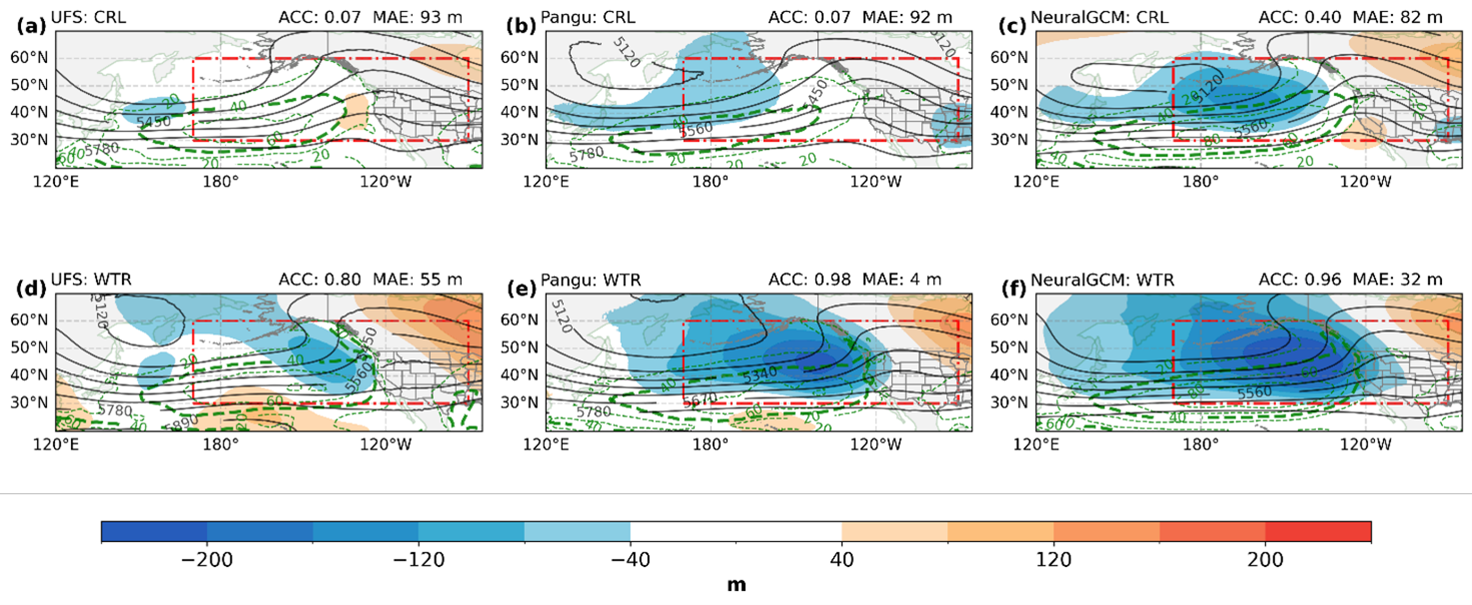Using ML models for advanced understanding of subseasonal predictability
Reliable weather forecasts beyond two weeks are crucial for preparing for extreme events, supporting agriculture, and enhancing community resilience. However, traditional numerical weather prediction (NWP) models face challenges in predicting weather patterns on these subseasonal timescales (2 weeks to 2 months) due to inherent limits in atmospheric predictability and due to systematic model biases. In a new study, scientists from the research group “Meteorological Data Science” investigate to what degree predictions of tropical-extratropical teleconnections could be improved if MLWP models better represented the dynamics of tropical modes of variability. The method, known as relaxation experiments and commonly used in NWP models, constrains forecasts toward observed data in specific regions to better understand how forecast errors in one region influence forecasts elsewhere.

The study explores whether applying tropical relaxation can enhance subseasonal forecast skill in two leading MLWP models, Pangu-Weather and NeuralGCM, compared with the traditional Unified Forecast System (UFS) model (Figure 1). The analysis focuses on two high-impact winter precipitation events in western North America during La Niña conditions between December 2022 (Figure 1) and February 2023 (not shown).
“Machine learning models are showing great potential for weather prediction, but we still need to understand how well they capture global connections like those between the tropics and mid-latitudes,” explains lead author Siyu Li. “By applying relaxation experiments, we can test whether reducing tropical forecast errors helps improving predictions for regions such as western North America.” For one of the two high-impact precipitation events, it is found that relaxation along the equator from 10°S to 10°N leads to better subseasonal predictions of anomalously cyclonic conditions which caused the heavy precipitation along the west coast of North America.
The findings demonstrate that the relaxation technique can be successfully applied to both pure machine learning and hybrid models, offering new ways to identify error sources at comparably low computational costs.
“This research shows that combining machine learning with established physical diagnostic tools can help bridge the gap between data-driven and traditional modeling approaches,” says Siyu Li. “Such methods could play an important role in improving the accuracy and robustness of subseasonal forecasts.”
You can find the article in: https://essopenarchive.org/users/960239/articles/1337598-relaxation-experiments-in-ml-based-weather-prediction-models-to-study-subseasonal-predictability
